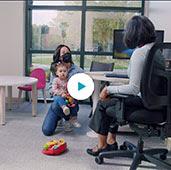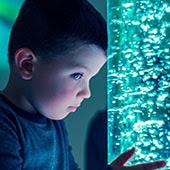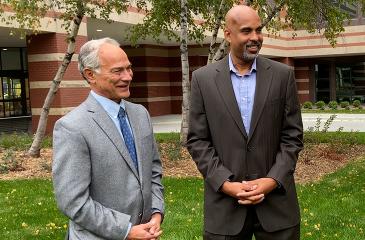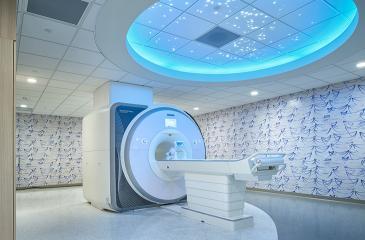2021: A Remarkable Year
What a year it has been. Our work together has brought to life a vision to unite expertise from across the University under one roof to accelerate the pipeline for new discoveries and improve brain health throughout life.
Since we opened our new MIDB facility last month, we have seen firsthand the many opportunities to break down the old silos of discovery. We are excited about working side-by-side to better understand how young brains develop to ultimately have a positive impact for children, families and our community.
The New Year will bring new opportunities to further our mission of advancing brain health from the earliest stages of development across the lifespan, supporting each person’s journey as a valued community member.
New Video: The Promise of MIDB
To celebrate the opening of our doors, enjoy our brand new video showcasing MIDB’s transformative facility and all it has to offer for children, adolescents, families and the broader community through integrated expertise in research, clinical care, outreach and engagement. Please share with your networks to amplify the promise of MIDB positively impacting those in our region and beyond.
Researchers: 1 in 36 Children Identified with Autism in Anoka, Hennepin, and Ramsey Counties
As part of an 11-state network funded by the Centers for Disease Control and Prevention’s Autism and Developmental Disability Monitoring Network (ADDM), the Minnesota-specific report shows the rate of autism spectrum disorder (ASD) in Minnesota is higher than the overall ADDM rate. The CDC found that, on average, 1 in 44 (2.3%) children were identified as having ASD in communities where prevalence was tracked by the ADDM Network. “Minnesota’s higher prevalence rates may be reflective of the areas in which we collected data which are primarily urban with relatively good access to diagnostic services,” said Dr. Jennifer Hall-Lande, co-principal investigator for the Minnesota project. “These latest numbers tell us that we are identifying more children with autism in our communities. It is important to remember that behind these numbers are real children and families. In the end, what matters is that children with autism and their families get the support and services they need to live healthy and successful lives.”
Shuttle Service To and From MIDB
The MIDB shuttle service runs Monday through Friday from 7:30 a.m. to 5:30 p.m., alternating on two direct routes between:
- the MIDB and the Masonic Children’s Hospital
- the MIDB and the Stadium Village Light Rail station
The East Bank route includes a stop on Oak Street at Territorial Hall on the return trip.
KSTP Spotlights HBCD Study
Sylia Wilson and Anna Zilverstand were recently featured in a KSTP-TV story on the HEALthy Brain and Child Development (HBCD) Study. Zilverstand shared that “something like this really hasn't been done before.” Wilson added, “This is an incredible opportunity. It will certainly be the largest study of early childhood brain development that has yet been conducted in the United States or the world to my knowledge.” MIDB serves as a key data collection, management, and analysis site for the HBCD Study, a large, multi-institution project with 25 study sites across the country. In October the University of Minnesota received two grants totaling $26 million from the National Institutes of Health to support this research.View the KSTP story.







